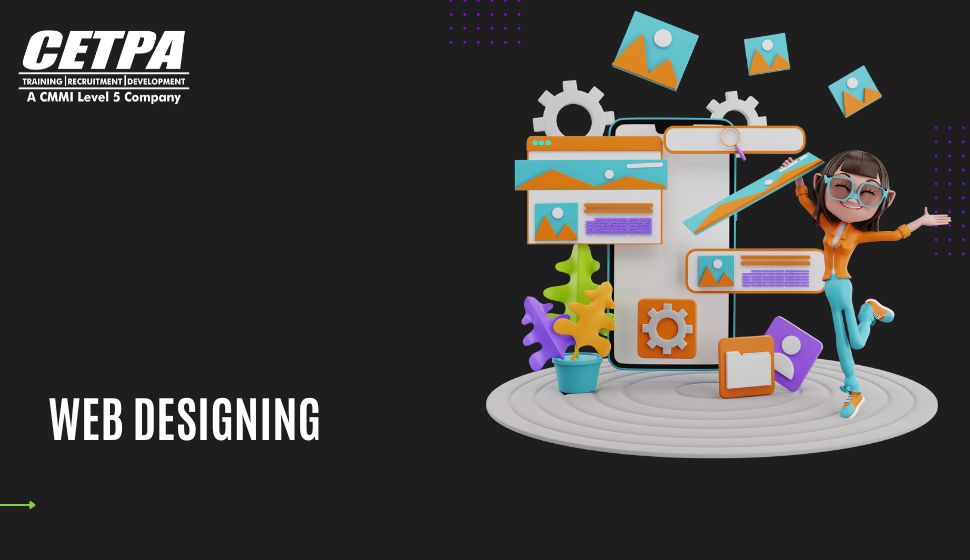Are you looking to sharpen your web design skills without spending months or draining your savings? If you’re a student trying to break into the creative tech world or a professional looking to upgrade your portfolio, enrolling in a web designing course can change your career entirely. Here’s a breakdown of practical, fast-track tips to help you get better at web design skills without burning out or getting overwhelmed.
Choose the Right Web Designing Course
It’s easy to get distracted by fancy courses or aggressive ads. But the real question is: Does the course cover both fundamentals and hands-on projects? A quality web designing course from Best IT Training Institute should help you understand HTML, CSS, responsive design, UI/UX basics, and at least one visual design tool (like Figma or Adobe XD). If you’re new to the field, look for a web designing course with certificate. Employers often value this proof of training, especially when it’s just the beginning of your career.
Focus on One Skill at a Time
Online learning gives you flexibility, but that doesn’t mean you should try to learn everything in one go. Spend a week just understanding layout and typography. Then move on to colors, icons, user flows, and accessibility. Short lessons and focused sprints lead to better retention than binge-watching tutorials.
Apply What You Learn Immediately
Theory is important, but practice builds confidence. After completing a module, challenge yourself to redesign a website you use often. Use the concepts you just learned—like grid systems or color contrast, and compare your design to the original. This habit transforms passive watching into active skill-building. If you’re learning through a web designing course with certificate, try building a portfolio. Doing so will reinforce your learning, help you retain new skills longer, and keep your progress aligned with your end goal.
Get Comfortable with Tools
Most web designing training programs introduce tools like WordPress, Canva, Webflow, or Dreamweaver. Don’t just watch someone else use them—open them up, click around, build things. Even if you mess up, you’ll gain familiarity that no tutorial alone can give you.
Stay Updated with the Latest Trends
Web design changes quickly. Flat design, minimalism, brutalism, micro-interactions—each year brings something new. Many web designing online courses now include bonus modules on the latest design trends and tools. If your course doesn’t, follow popular design blogs, YouTube channels, or designers on social media to stay in the loop.
Join Online Design Communities
Taking a course doesn’t mean isolating yourself. Join forums, Slack groups, or Discord servers filled with web design learners and pros. Share your projects, ask for feedback, or even collaborate on something small. You’ll learn a lot faster when others are reviewing your work.
Don’t Skip UX and Accessibility
Good web design is more than just making things look pretty. It’s about making sites usable and accessible. Choose a web designing training that covers user experience (UX) principles and accessibility best practices. This skillset is highly valued in the industry and often separates a beginner from a hireable designer.
Build a Portfolio
While getting a certificate is great, what truly impresses employers is a portfolio that shows what you can do. Create landing pages, personal sites, redesigns of real businesses, or even mock e-commerce pages. Include before-and-after screenshots, and the design tools you used. Over time, these small projects will add up to a strong body of work and, more importantly, consistent improvement. A strong portfolio will land you a high-paying and successful job.
Set Weekly Challenges
One of the easiest ways to stay motivated while learning from a web designing online course is to set weekly challenges for yourself. When you’re not in a classroom environment, it’s easy to fall into a pattern of passive learning. Challenge yourself to design a responsive homepage using only HTML and CSS. Or try recreating the layout of your favorite brand’s website using tools like Figma or Adobe XD within three days. These micro-goals force you to actively use the concepts you’re learning and build problem-solving skills along the way.
Conclusion
Improving your web design skills doesn’t require years of formal education or a huge budget. With the right mindset and a quality web designing online course, you can build practical, in-demand skills from the comfort of your home. If you’re aiming to land your first client, apply for design roles, or just build beautiful websites for fun, now’s the perfect time to start.



